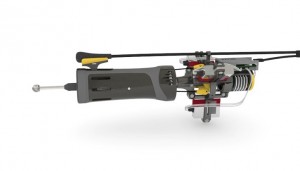Traditionally, the first piece of molding or woodwork is created by a master carpenter, then replicated by his apprentices. Even with a high level of skill, replicated three-dimensional contours is challenging, and often requires extensive hand finishing.
Lots. Furniture makers first adopted CNC (computerized numerical control) machines to make intricately carved panels and parts, but it can also create cut out and do just about any type of sculpting. It also has the ability to scan and replicated almost anything you put in front of it.
Making complicated pieces such as moldings and friezes is a very slow process, requiring a high level of skill. A CNC gives a woodworker the ability to create something original, pouring incredible skill and creativity into one piece, and then pass that piece off to an “employee” that can replicated it exactly as many times as needed. There are even handheld CNC milling machines that allow an artist to free form create of a piece, but can override cuts that would take away from the predetermined shape of the piece. Pretty cool, right?

There is a whole school of thought that believe that CNC machines take away value from the skill of the carver and the labor involved creating something. But it is important to remember, the computer does not create the design, the craftsmen do. Translating those designs to a CNC machine takes a considerable amount of work as well, and those that are good at it have a strong technical background. It actually takes longer to design a carving on a computer than to just sit down and sculpt it yourself. The only difference being, once a computer design is completed, it can be replicated an infinite amount of times.
Computer numeric controlled machining centers are used to produce a wide range of components, and tooling costs involved have continued to become more affordable. In general, large production runs requiring relatively simple designs are better served by other methods, although CNC machining can now accommodate a wide range of manufacturing needs. CNC milling centers are ideal solutions to everything ranging from prototyping and short-run production of complex parts to the fabrication of unique precision components.
I would argue that CNC has deepened the appreciation of hand carving. Anyone can go to IKEA and find a mass produced carving, but knowledge of the maker and the story behind a piece adds an extrinsic value that is hard to measure.
That said, millworker should be welcoming to CNC technology. CNC machines are not perfect, each piece that comes off still requires hand finishing, but they are a useful cost and time-saving tool.
What a CNC milling maching make a gear:
Architects, builders and designers trust us to bring their concepts to life, on time and within budget.